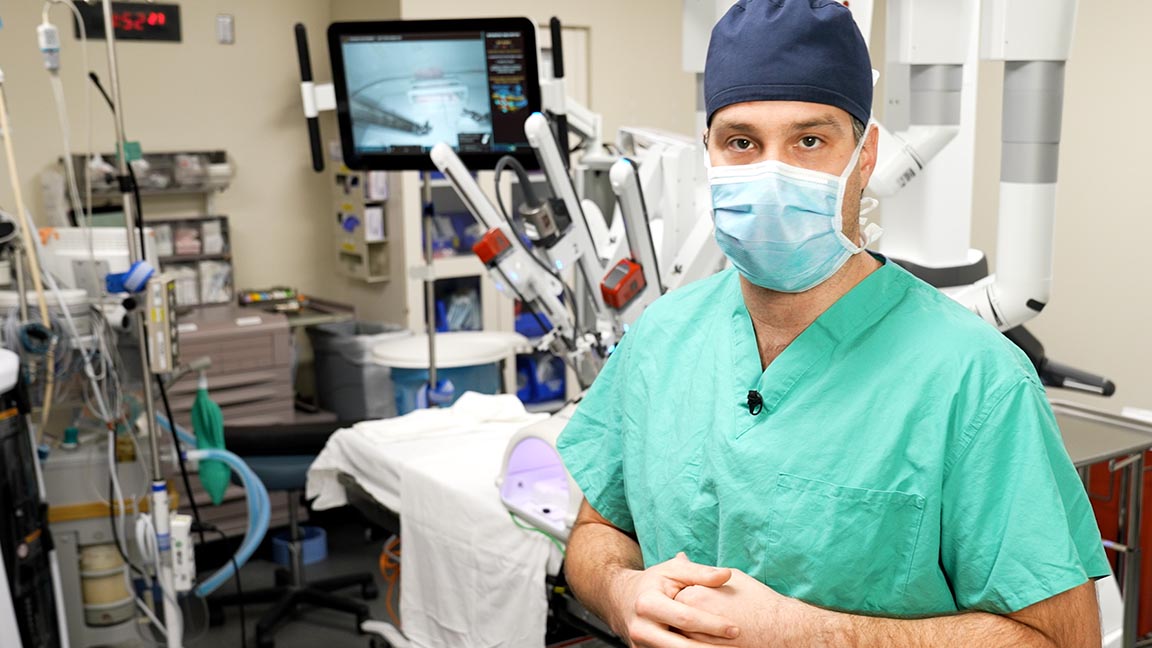Robotic-assisted surgery gives surgeons precise control of instruments, an enhanced 3-D view of the surgical site and incredible dexterity to operate in hard-to-reach areas. These features translate into tangible benefits for patients.
“For eligible patients, this approach to surgery eliminates the need to use large incisions and cut through layers of tissue. That means patients heal faster and have less pain,” says Dr. Jack Johnston, a general surgeon at Tidelands Health Surgical Specialists at The Market Common and Murrells Inlet. “It’s a win-win for surgeons and patients.”
At Tidelands Health, patients can stay close to home and benefit from this advanced surgical technique.
Here are five key benefits of robotic-assisted surgery:
1. Faster recovery
One of the biggest advantages of robotic-assisted surgery is a quicker recovery time. Hospital stays are typically shorter following robotic-assisted procedures, and patients are often able to return to their normal activities more quickly than with traditional open surgery or laparoscopic surgery, Dr. Johnston says. For example, patients who have robotic-assisted hernia surgery may go home as soon as the day after surgery as opposed to spending several days in the hospital following open surgery.
Robotic-assisted surgery patients can:
- Get out of bed soon after anesthesia wears off.
- Eat within a few hours of surgery.
- Return home quickly, often the same day or the next day, after surgery.
2. Less pain
Robotic-assisted surgery allows surgeons to perform complex tasks using tiny incisions. Smaller incisions generally mean significantly less bruising and impact on the body during the procedure. Additionally, unlike the human hand, the instruments used in robotic-assisted surgery can articulate 540 degrees, giving surgeons enhanced access within the surgical site without putting as much stress on the incision.
Many patients can manage their pain after surgery with over-the-counter pain relievers.
3. Reduced scarring
Along with reduced pain, smaller incisions typically mean less scarring than with traditional open surgery. Robotic surgery typically requires only a few incisions, each about an inch long.
4. Less risk of infection
Since the surgeon’s hands never enter the patient’s body, there’s less risk of infection. What’s more, robotic arms can move more smoothly than the human hand, reducing the chance of nicks or punctures to surrounding tissue.
5. Reduced blood loss
Robotic-assisted surgery results in a more precise and less disruptive operation, which decreases potential sources of bleeding during surgery. And since the surgical incisions are smaller, patients’ risk of bleeding after surgery is significantly decreased.
“Robotic surgery provides surgeons the tools to carry out extremely precise, extremely delicate procedures through remarkably small incisions,” Dr. Johnston says. “The benefits of this type of surgery are truly remarkable.”




